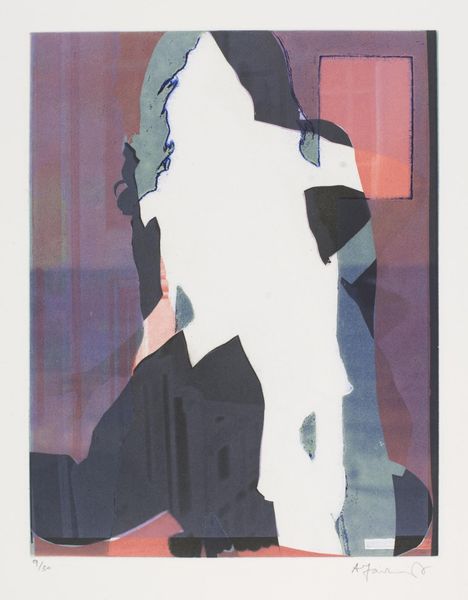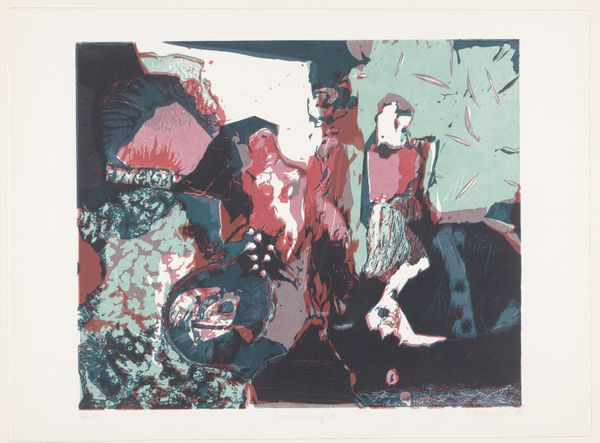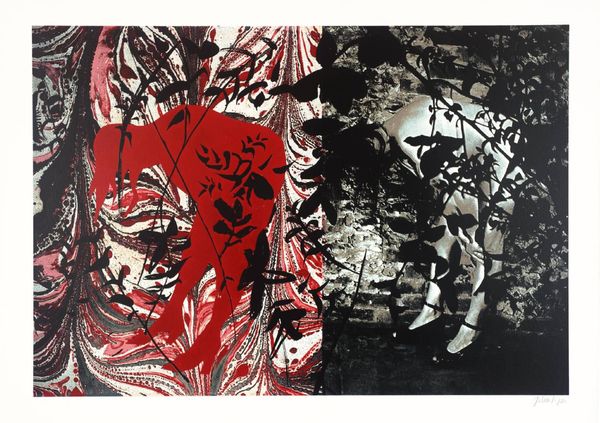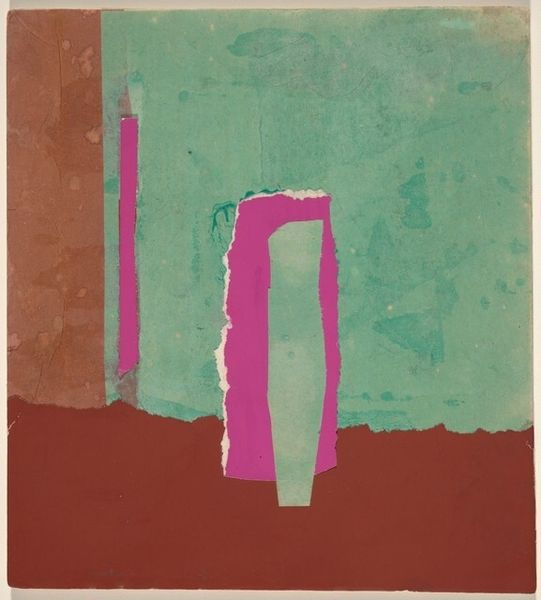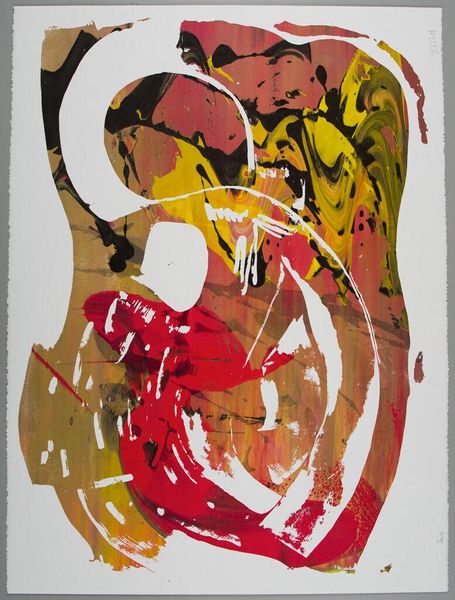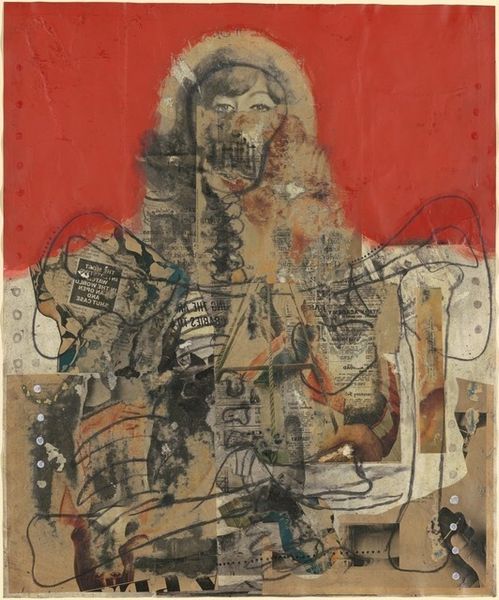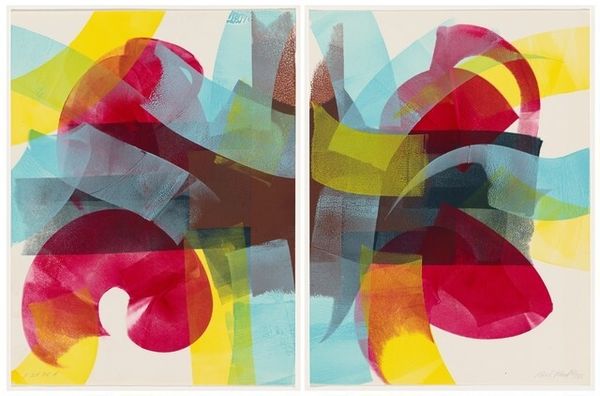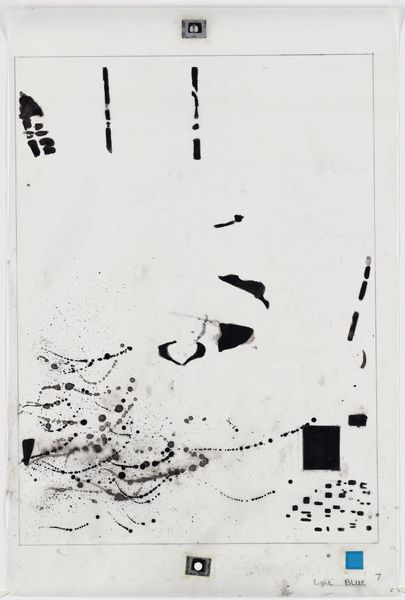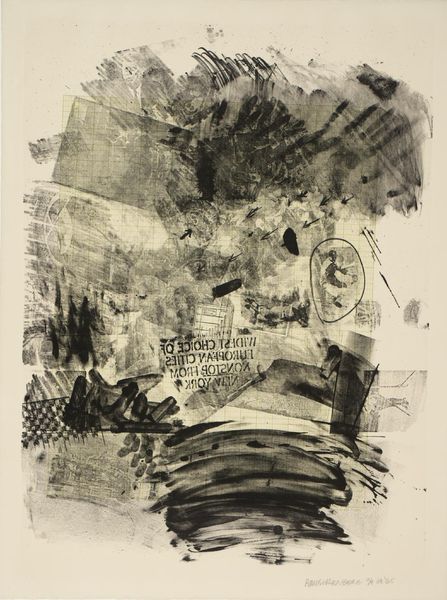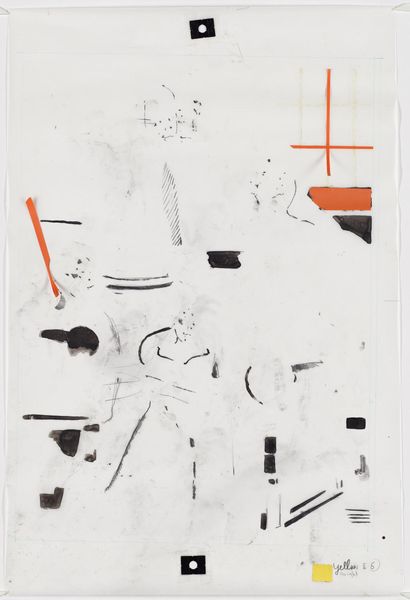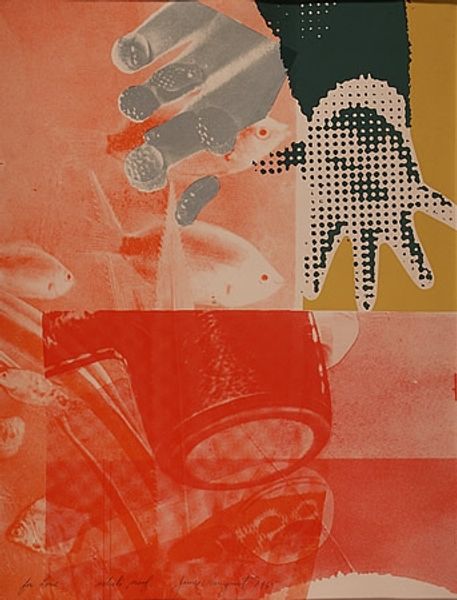
Dimensions: image: 294 x 218 mm support: 510 x 406 mm
Copyright: © The estate of Angus Fairhurst | CC-BY-NC-ND 4.0 DEED, Photo: Tate
Curator: Angus Fairhurst's "Unprinted II," from the Tate collection, presents an intriguing layering of images and textures within a relatively modest scale of roughly 294 by 218 mm. Editor: It feels disjointed, almost like fragmented memories overlapping. The warm hues create a strange sense of both comfort and unease. Curator: Absolutely. Fairhurst, whose life was tragically cut short, often played with disjunction. His work frequently explores the instability of meaning. This piece, with its ghostly figures and obscured imagery, fits that pattern. The overlaid patterns evoke a sense of cultural memory, like half-remembered wallpaper designs. Editor: The way the figures seem to almost dissolve into the background really emphasizes how easily things can be forgotten or distorted over time. It's a potent visual metaphor for the fragility of history itself. Curator: Indeed, Fairhurst prompts us to consider how visual representation shapes our understanding of the past and its impact on our present. Editor: It definitely gives you a lot to think about in such a compact piece, doesn't it?
Comments
Join the conversation
Join millions of artists and users on Artera today and experience the ultimate creative platform.
tate 7 months ago
⋮
Unprinted II 2006 is one of a set of three small rectangular photo-etchings mounted on grey paper, which depict silhouettes of women superimposed on top of each other against multi-layered backgrounds. The other works in the set, which are also owned by Tate, are Unprinted I 2005 (Tate P20288) and Unprinted III 2006 (P20290). The prints are largely made up of discrete blocks of colour, the tones of which vary where the layered images overlap. In the central portion of each image a number of silhouettes of women are layered over one another and some elements of their bodies – such as crossed legs and locks of hair – stand out in blocks of white, revealing that they are made from cut-out shapes rather than photographs. Each work offers partial and sometimes contradictory hints of a setting behind the women: Unprinted I includes a dim image of a wall with ridged rectangular shapes reminiscent of door panels or picture frames; Unprinted II features what appears to be flowered wallpaper and light filtering into a room through windows and blinds, while simultaneously showing an area of grass under the silhouetted women’s feet, suggesting that the figures are in fact outside; and the background in Unprinted III includes a wall with frame-like shapes on it overlaid with an image of a chain-link fence.
